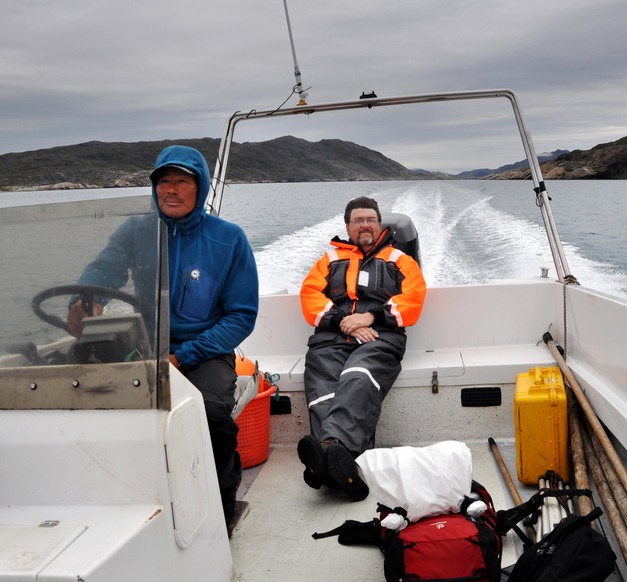Academics have long wrestled with the puzzle of the end of Norse settlements in Greenland. Norse people sailed from Iceland shortly before 1000 A.D. and settled in two locations in Greenland. They then disappeared as if the earth had swallowed them up around the middle of the 15th century.
It is known that the climate cooled over the centuries following the Norse settlement of Greenland. The fertility of the land and natural conditions were therefore different from those the people had become accustomed to – the land was inhospitable. They were also isolated from Europe and there were great distances between settlements, as revealed by the research of Orri Vésteinsson, Professor of Archaeology. The Inuits were the native inhabitants of this land and there is no consensus on whether they had a part to play in the abandonment of the Norse settlements.
Orri has researched the microsociety in Greenland in the middle ages. A few years ago he began to measure a farmstead in Hvalseyjarfjörður, Greenland. "From that I got the idea of trying to analyse how the society, the parish of Hvalsey Church, might have worked."
Orri Vésteins
Orri has researched the microsociety in Greenland in the middle ages. A few years ago he began to measure a farmstead in Hvalseyjarfjörður, Greenland. "From that I got the idea of trying to analyse how the society, the parish of Hvalsey Church, might have worked."

Orri says that compared with Iceland, the distances between farmsteads were extremely long in Greenland and there appeared to be far more natural obstacles than in Iceland. "In Iceland, standard average distances between farms were around 700 to 1400 metres, but in Hvalseyjarfjörður, which was densely populated by Greenlandic standards, the average distance between farms at the height of the population was 4100 metres. It seems clear that they had less contact with each other and that the cost of maintaining communications was much higher than in Iceland."
In recent years, Orri has travelled to Greenland every summer to continue the recording and measurement of farmsteads in Hvalsey parish. He has also taken part in an excavation project at Garðar and recording around the diocese there. "It has been extremely enlightening as a comparison," says Orri, "and I suspect that it will be easier to understand why the settlements in Greenland failed if we have a better understanding of the quality of life there – compared to Iceland, for example."
Orri has long been interested in the impact of population density on quality of life and has also researched this topic here in Iceland. "The people who moved to Iceland at the end of the 9th century came from regions where people either lived in villages or on farms which were much closer together than here. It is therefore interesting to try and understand what impact it had on people's lives to live so far apart that most people did not have daily contact with anyone from outside their own household. This affects social institutions of all kinds, from feast holding and games to religious services and politics. I have also investigated how the Church adapted its work to these conditions, because we have the most sources about that, both archaeological and textual."


